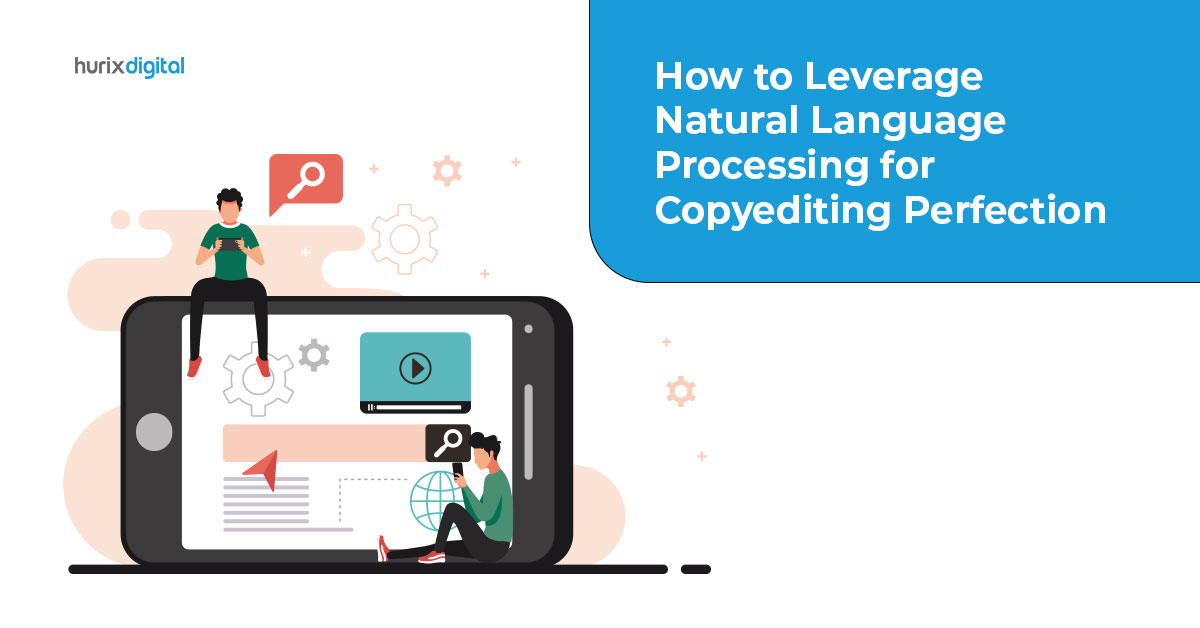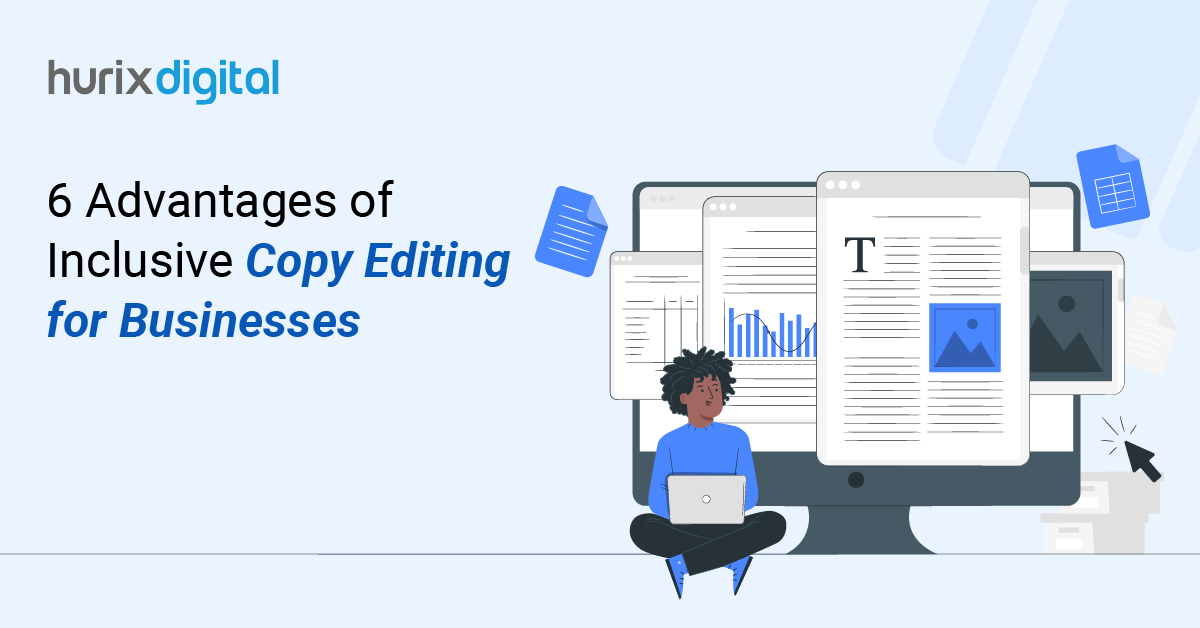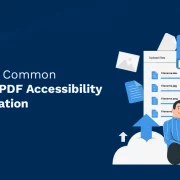
How to Leverage Natural Language Processing for Copyediting Perfection?
Summary
Discover how natural language processing (NLP) can be leveraged for copyediting, enhancing accuracy, consistency, and efficiency in the editing process.
In this digital age, technologies like AI are having an all-pervasive influence on every industry worldwide. As AI continues to deepen its roots in industries and grow at an expected annual rate of 37.3% until 2030, new branches are popping up left, right, and center.
Natural language processing (NLP) is a very important branch among all the AI branches. NLP is used significantly in the publishing industry, particularly for the process of copyediting.
Considering this, if you want to produce high-quality, well-edited, and professional documents with increased accuracy and efficiency, knowing how to use natural language processing in copyediting is essential.
So, let’s delve into that after understanding the basics.
Table of Contents:
- What is Copyediting?
- What is Natural Language Processing?
- What are the Best Practices for Leveraging NLP in Copyediting?
- Conclusion
What is Copyediting?
Copyediting is a process that takes place once the draft of a written document – be it a book, journal paper, article, or any other piece of writing – is complete. The process involves editing the draft so that it’s grammatically correct, factually accurate, and easy to understand.
A copyeditor is usually the one who carries out the process of copyediting. However, with technological advancements, the responsibility is slowly shifting to AI-based copyediting tools to ensure that the document is clear, consistent, coherent, and correct concerning the context.
Also Read: AI-Powered Copyediting Tools: Exploring the Latest Innovations
What is Natural Language Processing?
An offering of AI, NLP aims to mimic human intelligence and arm computers with the ability to understand language as humans do. Developed with the combination of machine learning, computational linguistics, and deep learning models, NLP helps computers process written and spoken human language.
In copyediting, natural language processing (NLP) revolutionizes the way content is refined for maximum impact. Leveraging advanced algorithms and linguistic analysis, NLP empowers editors to streamline language, enhance readability, and optimize messaging to resonate with target audiences. By harnessing NLP techniques, copyeditors can intelligently craft content that captivates readers, evokes emotions, and drives desired actions. From identifying tone and style inconsistencies to fine-tuning syntax and grammar, NLP in copyediting elevates the effectiveness and persuasiveness of written communication, ultimately driving engagement and conversions.
What are the Best Practices for Leveraging NLP in Copyediting?
Now that you are familiar with copyediting and NLP – let’s delve into the best ways to use NLP, which can help you achieve perfection in copyediting.
1. Grammar And Spelling Correction
Traditionally, copyeditors review your entire document to weed out grammatical and spelling errors. This whole process can be time-consuming and sometimes cause some errors to be missed by chance.
To prevent this, natural language processing uses POS and grammar error correction models to rectify all your spelling and grammatical mistakes.
POS – part-of-speech tagging – also known as grammatical tagging, classifies words as pronouns, verbs, adjectives, adverbs, etc. Then, grammar error correction models scan your document to identify and auto-correct grammar, spelling, and punctuation errors, thus improving its readability and clarity.
2. Replacing Complex Words and Redundancies
Complex words can confuse your readers, and redundancies can annoy them. So, if you want to deliver a smooth reading experience, using familiar words and avoiding unnecessary jargon and repetitions is preferable.
With trained AI algorithms such as stop word removal, NLP-powered copyediting tools scan your document to filter out complex words and redundancies.
Once they flag them, they bring the whole matter to the attention of your copyeditors and provide them with simple alternatives to enhance the quality of your sentences.
3. Sentiment and Style Analysis
With its feature of sentiment analysis, natural language processing in copyediting can gauge the emotional intent of your piece of writing. It further classifies the sentiment and tone of your sentences as positive, negative, and neutral.
This allows your copyeditors to check whether the tone of your sentences is consistent with the message your paragraph is trying to convey. Apart from this, NLP also uses its pre-trained algorithms to analyze your document’s style as per your chosen style guide.
If there are inconsistencies, NLP flags them and provides suggestions to your copyeditors, thus helping them to correct your document’s style according to your preferred style guide.
4. Structure Correction for Contextual Improvement
Using natural language processing in copyediting, improve the contextual clarity of your document with semantic components like:
- Parsing: It works out the correct grammatical structure.
- Named entity recognition: It deciphers the nouns used in the sentences.
- Word sense disambiguation: It figures out the words that fit the best in the given context.
- Sentence segmentation: It divides lengthy sentences into short meaningful sentences.
With the help of the semantic components, NLP-based copyediting software analyzes the structure of your sentences and identifies unclear paragraphs.
They further provide better-phrased sentence-structure alternatives, whenever necessary, to help your copyeditors improve the contextual understanding of your document.
5. Formatting-Check and Correction
Poorly formatted pieces of content can damage your reputation and increase the bounce rate. So, if you don’t want to lose readers, leveraging NLP in copyediting is essential.
NLP-based tools sift through every page of your document to check the layout and formatting of your front, body, and end matter. Wherever they find inconsistencies – chapter titles, subheadings, paragraphs, page numbers, etc. – they auto-correct them.
Thus, NLP-powered copyediting tools weed out the weird formatting and turn your piece of writing into a well-formatted, visually-appealing document.
6. Machine Language Translation
In a time when countries are becoming increasingly interconnected, publishing a document in different languages is vital. Nowadays, even publishers require copyediting to be done in several languages, owing to the rise in globalization.
To help with this, NLP is equipped with the feature of machine translation, which converts the content of your document into the languages your publisher requires. While converting, machine translation ensures that your content’s meaning, tone, style, and formatting stay the same in other languages.
In case of a slight change, NLP-driven copyediting tools help your copyeditors restore clarity, coherence, and consistency of content across different editions of your document.
Thus, using natural language processing in copyediting, in this way eliminates language barriers and improves your odds of acquiring a global readership.
Also Read: Ethical Considerations in AI-Based Copyediting: Challenges and Solutions
Conclusion
Now that you know how to leverage NLP to get the best copyediting results, you should also know that the NLP market is expected to increase rapidly and reach over $43 billion in 2025.
If you want to capitalize on this, curate the best-quality documents, and earn a high return on investment (ROI), outsourcing copyediting services from companies like Hurix is a good place to start.
Hurix Digital provides customized copyediting services to ensure that your draft is grammatically correct, has a consistent flow and style, and is complete about the context.
Equipped with skilled copyeditors and an AI tool, Hued, Hurix Digital performs AI-assisted copyediting using NLP to ensure that your copy is in the best shape before you send it to the publishers. As a firm believer in creating polished and impactful content, Hurix Digital is the trusted choice of companies like McGraw Hill, Cambridge University Press, and more.
To know more about NLP-powered copyediting services, get in touch with Hurix Digital.

Vice President – Digital Content Transformation. He is PMP, CSM, and CPACC certified and has 20+ years of experience in Project Management, Delivery Management, and managing the Offshore Development Centre (ODC).







